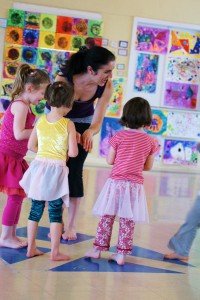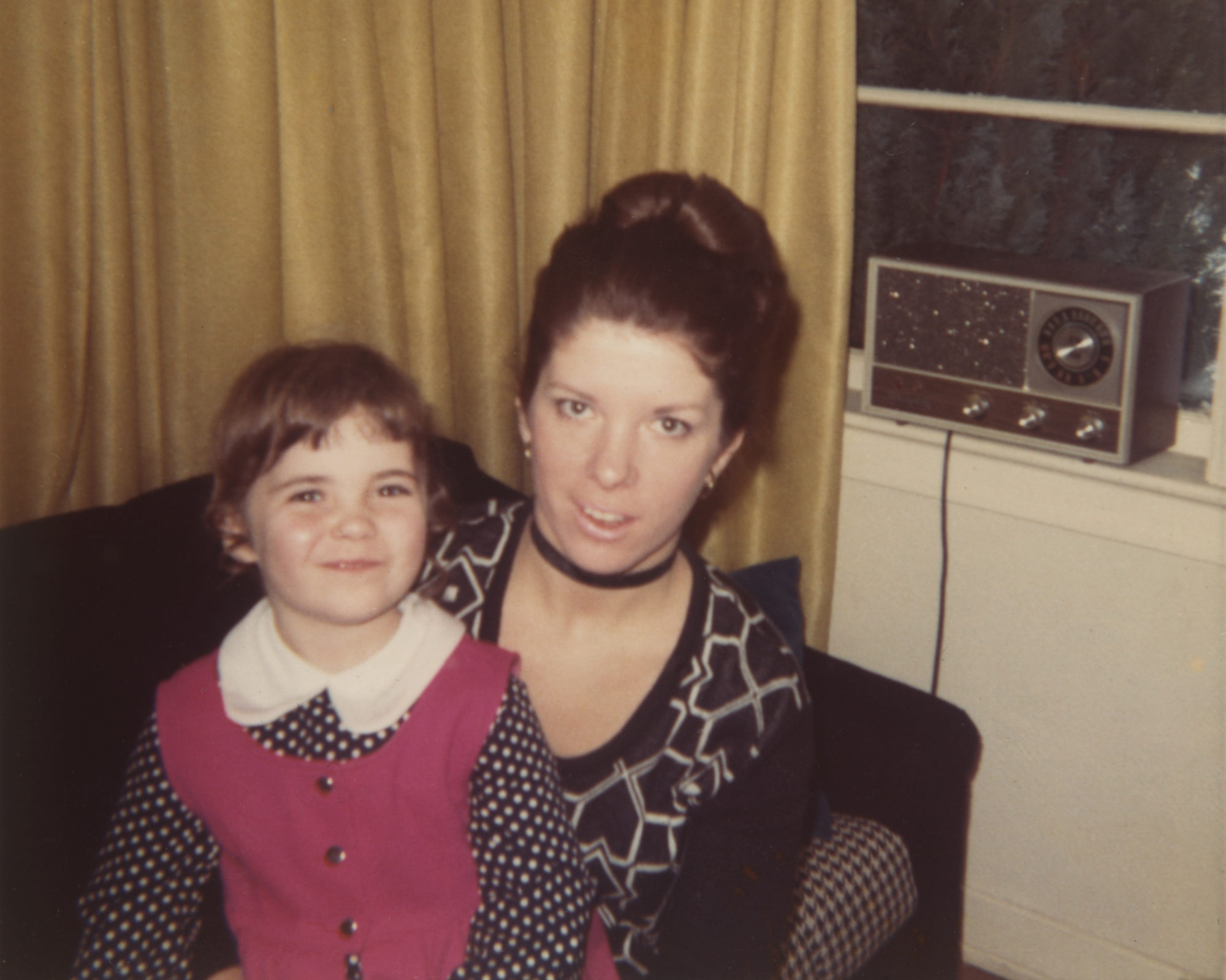 If we were to imagine an authentic (and healthy) childhood, likely it would be one in which children have a free place to roam, both in an inviting and comfortable abode, and outside, in nature. Likely too, it would be one where adults treat children with respect and love, and where it is expected that children would treat each other the same way. Adults, their occupations and activities, would be regularly viewed, and their tasks at times shared. It would be a childhood where creative play evolves organically from things at hand; where meals are consumed together; where the days events are reflected upon; where responsibilities are regarded as a simple part of life; and, ideally, where the new is welcomed, observed, and engaged with. It would be a childhood rooted in community, nature, and everyday life, and so is the vision of childcare outlined in “Authentic Childhood, Exploring Reggio Emilia in the Classroom†by Susan Fraser (the first edition, which I’ve linked to here, so that you can read the text, was co-authored by Carol Gestwicki). Based on her studies of the Reggio Emilia approach, Fraser outlines how one might take on a seemingly impossible task–that of providing an authentic childhood in the classroom.
If we were to imagine an authentic (and healthy) childhood, likely it would be one in which children have a free place to roam, both in an inviting and comfortable abode, and outside, in nature. Likely too, it would be one where adults treat children with respect and love, and where it is expected that children would treat each other the same way. Adults, their occupations and activities, would be regularly viewed, and their tasks at times shared. It would be a childhood where creative play evolves organically from things at hand; where meals are consumed together; where the days events are reflected upon; where responsibilities are regarded as a simple part of life; and, ideally, where the new is welcomed, observed, and engaged with. It would be a childhood rooted in community, nature, and everyday life, and so is the vision of childcare outlined in “Authentic Childhood, Exploring Reggio Emilia in the Classroom†by Susan Fraser (the first edition, which I’ve linked to here, so that you can read the text, was co-authored by Carol Gestwicki). Based on her studies of the Reggio Emilia approach, Fraser outlines how one might take on a seemingly impossible task–that of providing an authentic childhood in the classroom.
I first met Susan Fraser when she was doing work with the two centres for early childhood learning on Quadra Island, the Quadra Children’s Centre and the Quadra Island Preschool. My son, who is now much older, was enrolled in both programs at different times. It was there, under the wise tutelage of those who Fraser worked with in those centres, Baerbel Jaekel, Dee (Conley) McPhee, and others, that our family was awakened to what early childhood learning could be. The reams of research about the importance of early childhood education on the long-term development of the individual, and how that benefits society at large, had not yet arrived on the table when Fraser was doing her research back then. Instead, Fraser was basing her work on the lifetime of knowledge she had acquired in the classroom and in her own study, which included a trip to a Reggio Emilia preschool in Italy, where the philosophy of that name, and the basis of her book, had first been given wings.
The Quadra Island Preschool in particular, was our first experience with early education, and we approached it as many parents do, with an attitude that this is a place where we drop our child off, where we leave him behind, and carry on towards our own tasks. It was an attitude that came with our societal world view, that children are something that we try to move away from, that engagement with them is a pull from our own ambitions (and, often, our very real economic needs). But it wasn’t long before these knowing women had cast their magic upon us and drew us in to the world of our preschooler, despite our busy lives, helping us to see through his eyes and to connect with him, strengthening our bond, underlining our incredible love for him.
It began with Baerbel’s enthusiastic sharing of our child’s experience of some interaction that he’d had each day–with another child, with her, or with his environment. Often, we were taken by the hand or the arm and guided into the classroom to see what marvel our son had created, to view photographs of his engagement (how he had taken an idea, for example, vocalized it, and then seen it through to fruition) and to hear about the projects that he and his classmates, under Baerbel’s gentle guidance, had come together in building.
We came to understand the process. It was about creating an environment that was comfortable, calm, and safe, where members of the community visited to play music, share information, or do some art.
And in that space emotions were talked about, children’s aspirations were heard and built upon, whether creating a post office (that would stay set up) or a “machine†made of tubes to shoot popcorn down. Art and building supplies that spoke to such aspirations (things like ornate bits of paper and items collected from nature) were displayed in open baskets and boxes, enticing children to use them. When completed, creations were arranged according to basic principles of design so that, in being strung in an interesting pattern from the ceiling or grouped by colour against a contrasting background, works added to everyone’s enjoyment of the place. It was a simple act imbued with meaning and repeated again and again–what you create has affect, what you do is honoured and respected.
The natural world was also honoured; the outside was brought in and displayed on tables and window sills for all to look at and touch. Often things were grown inside too, like potatoes in a glass container so roots could be viewed, but not just viewed, responded to as well. Paper, pencils, and magnifying glasses were set up next to the growing potato, watercolours next to a vase of fall leaves or spring flowers.
And in that world, everyone helped to set the table and bring to it the food that was often made together with a parent helper, and then shared.
The children thrived in that environment and the parents grew with them. What our family brought away from that experience most was how to underline our child’s interests and curiosity, how to nurture and foster it, and, in turn, how important it was to resist imposing on him our own visions of what he needed to know. We gained a trust in his own innate desire to create and learn.
The centres I have viewed in Victoria don’t use this method, at least not in the same way that I saw it implemented on Quadra Island. It seems a resource that, like the meals at the preschool, could well be shared, especially in light of what we now know about the importance of the early years on a child’s whole life.
My question for you is this: how can we expand this vision of childcare? How can we foster the growth of the work that Susan Fraser and others like her are promoting in the childcare centres that our children attend? And I ask this of both parents and the community at large.
If you’re a childcare provider, have you heard of the Susan Fraser’s work and the Reggio Emilia approach? Would you like to know more? If you have, do you support it in concept, as a method? Do you incorporate it into your work at all? What would you need to see happen in order for this kind of care to be possible?

Michelle, Susan’s book has been an inspiration to educators the world over. I had the luck to attend a presentation she did here in Victoria and was inspired by her message.
There are passionate educators in Victoria. Who follow a philosophy inspired by Reggio Emilia, New Zealand, Australia, and Sweeden to name a few. I agree there are to many centres in Victoria that don’t view the child as capable and do not include the family in their programs and that makes is a tragedy. But I see change happening, its grass roots but its happening. I visit centres and I see educators starting to question the why of what they do. I see programs seeing the value of the natural world and trying to build community within their classrooms. These educators need support though, they need parents to stand up and say “I value what you are doing” because the truth is Early Childhood Educators are feeling the academic push.
Thanks for the wonderful post the Educators at Quadra deserve all the attention they get and so does Susan Fraser!
Hi Danielle, Thank-you for responding. I agree that early childhood educators need support and encouragement at every level. It baffles me why the whole field seems to fall outside of regular education. My understanding is that this may be in the process of shifting, to a certain degree, as we enter in to full-day kindergarten and possibly pre-school. (I don’t know if this is still in the works, but I do recall reading about that possibility regarding pre-kindergarten.) When I think of my own experience with our son when we were on Quadra Island, one thing I do remember stands out for me in terms of why it worked so well, and that was that the educators were really willing to take on a leadership role. Parents in general focus on parenting, but they don’t know what makes a good daycare environment. It seems to me that, as a professional, this is the role of the ECE and programmers, to bring parents and the community into the fold and let them know where their input and efforts are needed. It is under the guidance of the ECE that a community environment is nurtured and created, and, in turn, where parents and the community at large discover ways to be engaged and supportive. Of course, the ECE needs training and support in how best to do that, and I wonder how that might look, workshops from folks like Susan, mentors who visit the classroom…I hope that you are right that there is a movement to change the status quo. I know that the parents I have spoken with hope it comes sooner rather than later. Best of luck to you!
I came across this post after googling “Reggio Emilia Pre-school’s in Victoria BC”. I am desperate to find a safe, nurturing pre-school program that welcomes us as a family….not just a child, a cheque, with a mother who they wish would just say goodbye and leave. I want to partner with teachers. My son has never been left without his family, it’s a big deal for him. It’s hard for him, for me. He is three and I want his first experience to be positive, soft, loving. He is full of wonder, curiosity …the status quo just isn’t good enough. I heard about RE from a dear friend of mine who runs a centre in Kamloops…is there really nothing like it here in Victoria??